 The content of this project information sheet falls under the sole responsibility of the AFD and does not necessarily reflect the opinions of the European Union.
The content of this project information sheet falls under the sole responsibility of the AFD and does not necessarily reflect the opinions of the European Union.This project is carried out with the support of the European Union
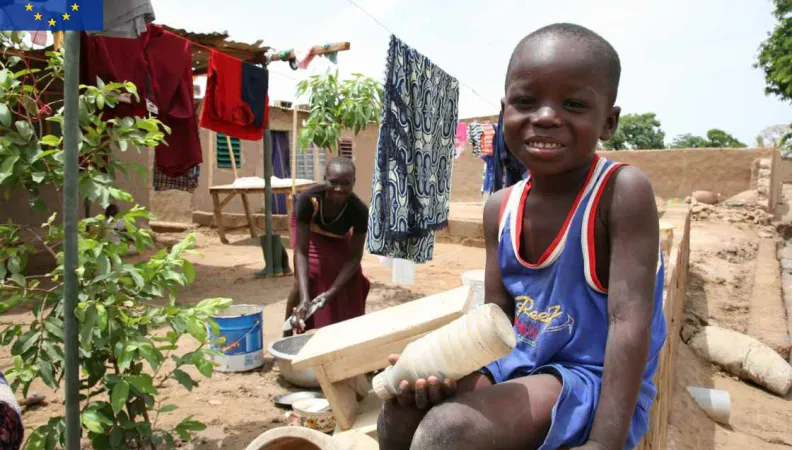 Legal notice EU (project) Burkina Faso has enjoyed relatively strong economic growth throughout the past ten years (more than 5% per year on average). Nevertheless, a non-negligible portion of the country’s population lives below the poverty line (40% in 2014). Thorough analysis is needed to better understand the many challenges posed by this level of inequality.
Legal notice EU (project) Burkina Faso has enjoyed relatively strong economic growth throughout the past ten years (more than 5% per year on average). Nevertheless, a non-negligible portion of the country’s population lives below the poverty line (40% in 2014). Thorough analysis is needed to better understand the many challenges posed by this level of inequality.
Context
Between 2007 and 2013, the average annual growth rate of Burkina Faso’s gross domestic product (GDP) was approximately 7% per year in real terms, representing one of the best economic performances in West Africa. If we take into account the country’s strong population growth, the average rate of per-capita GDP rose by 3% per year during this same period. Meanwhile, the poverty rate grew from 45% in 1994 to 47% in 2009. Despite signs of a decline (40% in 2014), considerable inequalities remain.
This project is part of the first phase of the Research Facility on Inequalities, coordinated by AFD and funded by the European Commission's Directorate-General for International Partnerships over the 2017-2020 period. The first phase of the Facility has led to the conduct of 22 research projects and the publication of around 100 research papers and policy briefs.
Goal
The initial objective of this research program on inequalities in Burkina Faso is to create an inequality diagnostic in the country. In a second phase, scientific studies will be carried out on three themes:
- The dynamics of inequalities and of multidimensional poverty;
- Educational trajectories; and
- What happens to graduates of the educational system.
The objective here is to examine how school graduates become integrated into society later, and to what degree they put into practice the skills acquired at school.
The research will mainly concern the cities of Ouagadougou and Nouna, in western Burkina Faso.
Method
The diagnostic on inequalities will take stock of the situation in Burkina Faso through a literature review and analysis of data from national surveys. The dynamics of inequalities and of multidimensional poverty in Burkina Faso will be understood through the experiences of one of the partners of this project, the Ouagadougou and Nouna Observatories. Analysis of trends in inequalities and in multidimensional poverty over time will be carried out in urban, semi-urban, and rural areas, according to the demographic, social, and economic characteristics of households and to the degrees of poverty. Research on the educational trajectories and on what has become of people having graduated from the educational system will use the same data. The idea is to monitor cohorts of school graduates to study their trajectories and their integration into the society in the longer term.
Results
This research will give rise to conferences and workshops. Various publications are also planned: a report, policy briefs, and research articles.
You may find the research papers here (in French) :
- Etat des lieux des inégalités multi-dimensionnelles au Burkina Faso
- Les inégalités au Burkina Faso à l'aune de la pandémie de la Covid-19: quelques réfléxions prospectives
- Dynamique des inégalités et de la pauvreté multi-dimensionnelle à Nouna
- Dynamique des inégalités de la pauvreté multi-dimensionnelle à Ouagadougou : données de l'Observatoire de population de Ouagadougou
You may also find the policy briefs:
- Meeting the equity challenge in Burkina Faso: regional policies to reduce economic inequalities
- Improving access to education in Burkina Faso: a major condition for benefiting from the demographic dividend
And the policy dialogue: Improving access to education in Burkina Faso: A major condition for benefiting from the demographic dividend
Contacts:
- Linda Zanfini, Research Officer, AFD
- Rohen d'Aiglepierre, Research Officer, AFD
 Legal notice EU (project) Inequalities in urban water services are often perceived simplistically, according to a binary interpretation of “access/non-access,” with an end goal of making access to this public service universal. In other words, the issue has long been to ensure that all inhabitants enjoy access to water via a public service. This is all the more true in Bolivia, where water is considered as a “common good” subject to a principle of “non-commodification,” written in the country’s constitution since 2009. But the 2016 water crisis in La Paz has highlighted a new type of inequality in terms of water-supply service. During that drought episode, it was the inhabitants of the neighborhoods in the southern part of La Paz, where people from the middle and upper classes live, who were more exposed to the weakness of the main system of water access and who were deprived of water service. This shows one of the many possible variations in inequality in urban water services, the analysis of which requires going beyond just the question of technical access to the network.
Legal notice EU (project) Inequalities in urban water services are often perceived simplistically, according to a binary interpretation of “access/non-access,” with an end goal of making access to this public service universal. In other words, the issue has long been to ensure that all inhabitants enjoy access to water via a public service. This is all the more true in Bolivia, where water is considered as a “common good” subject to a principle of “non-commodification,” written in the country’s constitution since 2009. But the 2016 water crisis in La Paz has highlighted a new type of inequality in terms of water-supply service. During that drought episode, it was the inhabitants of the neighborhoods in the southern part of La Paz, where people from the middle and upper classes live, who were more exposed to the weakness of the main system of water access and who were deprived of water service. This shows one of the many possible variations in inequality in urban water services, the analysis of which requires going beyond just the question of technical access to the network.
Context
In 2015, the level of access to “improved” water services in Bolivian cities was 97%, while that of wastewater treatment services was limited to 61%. Beyond these general data, the available data on the rates of access to water-supply services does not necessarily reveal other types of urban inequality related to water. Such inequality concerns not just technical access to the network, which, incidentally, is easily recognizable on a servicing map.
They also involve, for example, the question of inequality linked to payment for the service. This type of data is more difficult to obtain, because it is linked to household composition, usage practices, consumption level, and of course income. Another type of inequality arises from the nature of the service provider. The public water service is not the only form of provision of service in cities: there are also small socio-technical systems decentralized at the neighborhood level, which sometimes substitute for the main system or provide supplementary service. They generally offer basic service of acceptable quality and with lower rates, but require active participation by users in collective maintenance work. In addition, a new aspect of inequality is related to the location of some households more exposed than others to the weakness of the main system. This phenomenon was clearly seen during the 2016 water crisis in La Paz, whose southern neighborhoods were deprived of water service for several weeks. Other factors of inequality can be identified, such as the political tendency or social-mobilization capacity of some networks. These factors can sometimes act as real comparative advantages that can sometimes constitute real comparative advantages in the priorities of access to water services and sanitation.
This project is part of the first phase of the Research Facility on Inequalities, coordinated by AFD and funded by the European Commission's Directorate-General for International Partnerships over the 2017-2020 period. The first phase of the Facility has led to the conduct of 22 research projects and the publication of around 100 research papers and policy briefs.
Goal
This research project is being led by a multidisciplinary team under the coordination of CIDES-UMSA. It seeks to examine and analyze the various types of inequality linked to water and sanitation services in La Paz-El Alto, as well as their trends in recent years, above and beyond the typical determinants such as income (vertical inequalities) and localization (spatial inequalities). In fact, the researchers are also interested in other, less-studied types of determinants, such as exposure to climate change, social representations, and political resources, all of which can affect social cohesion. The objective is to obtain a new interpretation of urban inequalities in La Paz-El Alto, in order to fuel dialog with municipal and sectoral authorities.
This project also seeks to support Bolivian research, through training, methodology workshops, and participation in international conferences, etc.
Method
This research project follows a multi-disciplinary and multi-theme approach that combines qualitative field surveys covering different areas of the two cities, on key subjects related to i) inequality in water services (trends in services on the urban fringe, small-scale systems, socio-political resources in neighborhoods, shared uses of water in the city, etc.), ii) historical analyses (how inequality in the services started), and iii) statistical analyses. The approach also involves working in connection with the municipal research services. The results from these different surveys and analyses will be discussed regularly at workshops for sharing experiences.
Results
Find the presentation of the research paper “Inequalities related to urban water services in La Paz-El Alto, Bolivia” by Sarah Botton (AFD research officer) and Patricia Urquieta (CIDES-UMSA researcher) during the third webinar of the Research Facility on Inequalities:
You may find the research papers linked to this project here:
- An overview of inequalities in urban water services in Bolivia
- Conflicts and tensions over water ownership in the territory of the urban-rural interface of Hampaturi, municipality of La Paz
- When governance fails: institutional asymmetries in water management in the municipality of La Paz
- Landscape of springs and collective outdoor laundries in the city of La Paz
- The ‘urbanization of water’ in La Paz, Bolivia: historical and conceptual perspectives
- Persistence of inequality in access to water: a look at the actions of women in peri-urban territories of the city of El Alto
- Territorial inequalities expressed in children's health in two neighborhoods with access to water in the city of El Alto
- Corporate citizenship and water urbanization on the outskirts of El Alto
You may find the policy briefs here:
- Springs and collective laundries in the City of La Paz, notes for their management
- Access to water : persistence of inequalities in the life of women
- Municipal planning and inter-institutional coordination for good water management
- Water and Sanitation works with Neighborhood Participation: regulated and transparent
- Water provision and management of urban-rural interface territories
- Water in the city of El Alto, a right that arrives incomplete
Contact:
- Sarah Botton, Research Officer, AFD
- Patricia Urquieta, CIDES-UMSA
Contactos:
- Sarah Botton, coordinadora de investigación en la AFD
- Patricia Urquieta, profesora-investigadora CIDES-UMSA
 Legal notice EU (project) Despite a democratic governance, well-established judicial, financial and human rights institutions and a positive policy framework, poverty and inequality are still largely cast along historical lines and in racial dimensions in contemporary South Africa. It remains highly unequal in its distribution of wealth, living standards, employment opportunities and household incomes. There is widespread discontent with the actual implementation of policy and the quality of delivered public services.
Legal notice EU (project) Despite a democratic governance, well-established judicial, financial and human rights institutions and a positive policy framework, poverty and inequality are still largely cast along historical lines and in racial dimensions in contemporary South Africa. It remains highly unequal in its distribution of wealth, living standards, employment opportunities and household incomes. There is widespread discontent with the actual implementation of policy and the quality of delivered public services.
Contexte
The inauguration of President Ramaphosa in February 2018 has offered the country an opportunity to put the South African project of Nelson Mandela back on track. But this will require confronting, head-on, the lack of progress towards a more balanced distribution of opportunities and incomes and the difficult political and economic questions that this raises. Will the benefits of political change be limited to a narrow elite or is more broad-based equitable development possible? What kinds of social, economic or institutional change might contribute to more rapid transformation of opportunities for the bottom half of the household income distribution? What kinds of constraints on power and privilege might contribute to fairer outcomes at the top tail of the distribution?
These difficult questions are of interest both in South Africa and internationally, and they are economic and institutional questions of considerable complexity. It is not just that a continued widening of inequality is unacceptable morally, it seems likely also that it threatens growth, social order and sustainability. Inequality reduction is under the spotlight in many countries and much work has been done internationally and in South Africa on understanding inequality.
This project is part of the first phase of the Research Facility on Inequalities, coordinated by AFD and funded by the European Commission's Directorate-General for International Partnerships over the 2017-2020 period. The first phase of the Facility has led to the conduct of 22 research projects and the publication of around 100 research papers and policy briefs.
Objectif
This project will draw on and consolidate this evidence-base and then fill some important, policy-relevant gaps that remain. By design, the research programme outlined below seeks to address distributional issues in both the bottom half and the top of the distribution. The work programme recognises from the outset that there are several dimensions of human development and wellbeing, and progress in some measures might be accompanied by deterioration in others. It recognises that economic growth does not necessarily lead to equitable outcomes – both poverty and inequality have self-reinforcing characteristics that are hard to counter.
The project will be undertaken in formal partnership with South Africa’s national statistical office, Statistics South Africa. Also, as important steps in the proposed research programme, a series of dialogues will be held between the researchers and key stakeholders, including representatives of government, business, organised labour and civil society – to seek advice, test ideas and contribute to consensus on possible policy reforms.
Méthode
The research project will be developed across three work streams:
- The implementation of the inequality diagnostic under the form of a report summarizing existing knowledge on South African inequality trends and policies. It will further add to this knowledge using available data, explore the implications of this new work and then take stock of data needs in order to make further progress in framing policies to overcome inequality.
- A paper on the role of earnings in the household inequality dynamics. It builds off preliminary evidence that a key aspect of the lack of support from the labour market into households is the volatility of employment and therefore earnings for the self-employed and other vulnerable workers.
- A paper on the interlinkages between population dynamics and spatial inequality. This paper is responsive to an often-expressed opinion from the policy community that migration is being driven by differences across provinces and regions in the quality of schooling, health, and other services.
Results
The diagnostic of inequality in South Africa, carried out by Statistics South Africa in partnership with the Southern Africa Labour and Development Research Unit (SALDRU), the African Centre of Excellence for Inequalities Research (ACEIR) in the EU-AFD Facility framework is available online: Inequality trends in South Africa: a multidimensional diagnosis of inequality.
This report was presented at a workshop involving all actors working to reduce inequality, held on 11 February 2020 in Philippi, Cape Town, on the occasion of the 30th anniversary of the release of Nelson Mandela. You will find here the synthesis of the workshop, including the presentations, discussions and debates held this day: Stakeholder engagement on inequality trends in South Africa.
Find the presentation of the research paper "Earnings Inequality over the Life-Course in South Africa" by Zocco Zizzamia (ACEIR, SALDRU-UCT, University of Oxford) during the second webinar of the Research Facility on Inequalities:
You may find the research papers here:
Contact:
- Anda David, Research Officer at AFD
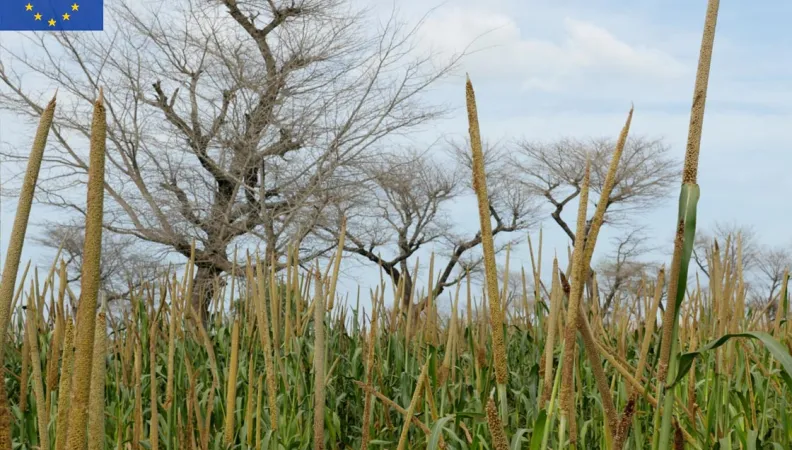 Legal notice EU (project) The goal of agroecological intensification is to increase productivity while avoiding the adverse environmental effects of mechanized conventional agriculture that uses chemical inputs. In order to carry out this agroecological transition, national incentives can be set up. This project seeks to evaluate the impact of these incentives on income inequalities in rural areas and to compare them with other types of public policies (subsidies for chemical fertilizers, for example).
Legal notice EU (project) The goal of agroecological intensification is to increase productivity while avoiding the adverse environmental effects of mechanized conventional agriculture that uses chemical inputs. In order to carry out this agroecological transition, national incentives can be set up. This project seeks to evaluate the impact of these incentives on income inequalities in rural areas and to compare them with other types of public policies (subsidies for chemical fertilizers, for example).
Context
Reducing poverty and income inequalities has been one of the priorities of Senegalese governments since the end of the 1990s. While progress has been made, 23% of households surveyed in 2011 still considered themselves as very poor. To reduce these inequalities and promote growth that is beneficial to the poorest, it is crucial to develop the agricultural sector. There are various possible trajectories for doing so. One is intensification of agroecology, which seems to be good choice for this development, in particular for environmental reasons. For example, several projects have shown that agroecological practices enable productivity comparable to conventional agriculture while at the same time being much more friendly to the environment and the climate. However, there are have been few studies that have quantified the impact of these practices on farmer income and especially on income inequalities, despite the fact that this is a fundamental parameter for achieving the goals of eliminating severe poverty.
This project is part of the first phase of the Research Facility on Inequalities, coordinated by AFD and funded by the European Commission's Directorate-General for International Partnerships over the 2017-2020 period. The first phase of the Facility has led to the conduct of 22 research projects and the publication of around 100 research papers and policy briefs.
Goal
The objectives of this research project are to:
- quantify the current income inequalities in rural areas in Senegal;
- analyze what impact different types of public policies that promote agroecology would have on these inequalities.
It is therefore a question of determining the type of grant for Senegal’s agricultural sector that is most likely to reduce inequalities. Different types of inequalities are studied: by gender, within a single community, and between two communities located in different agroecological zones.
Method
This project uses a multidisciplinary approach which combines participatory workshops in rural areas and a stage of bio-economic modeling of outcomes during the workshops. To do so, outcomes, and models already used in international projects (e.g. AMMA-2050) are being expanded and improved. The analysis must also focus on a sector very largely neglected in the past: the combined systems of farming and or livestock raising. Two agroecological zones are being studied under two contrasting climates: one symbolizing the current climate and the other, defined by climatologists, representing the future climate. This will help assess the relevance of agroecology faced with climate change adaptation and to quantify its contribution to the resilience of vulnerable populations.
Results
You may find the research papers here (in French) :
- Inégalités de revenu en milieu rural dans le bassin arachidier du Sénégal
- Impact de différentes politiques publiques sur l'intensification agroécologique et les inégalités de revenu dans le bassin arachidier du Sénégal
You may find the policy briefs here:
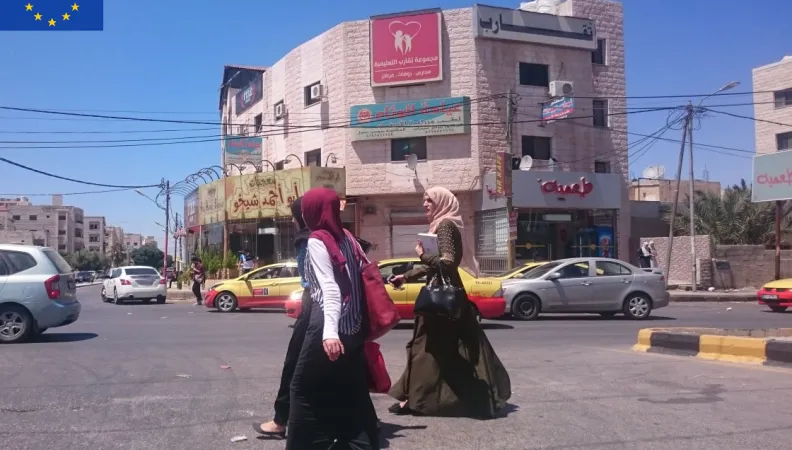 Legal notice EU (project) This study analyzes trends in inequalities between 2010 and 2016 in the two main Jordanian cities hosting Syrian refugees: 194,000 Syrians in Amman and 140,000 in Irbid, according to 2018 data of the United Nations Refugee Agency (UNHCR). This research project involves studying the impact of the influx of Syrians on trends in economic inequalities (incomes, growth, poverty, etc.) and on the housing market (real estate market, share of housing in household expenditures, etc.).
Legal notice EU (project) This study analyzes trends in inequalities between 2010 and 2016 in the two main Jordanian cities hosting Syrian refugees: 194,000 Syrians in Amman and 140,000 in Irbid, according to 2018 data of the United Nations Refugee Agency (UNHCR). This research project involves studying the impact of the influx of Syrians on trends in economic inequalities (incomes, growth, poverty, etc.) and on the housing market (real estate market, share of housing in household expenditures, etc.).
Context
According to the official Jordanian population census, there were an estimated 1.2 million Syrian refugees in the country as of November 2015. This figure corresponds to between 10% and 12% of the population. Approximately 660,000 of them are registered as “asylum seekers” by the UNHCR. But their number has been decreasing since 2015, probably because of migration, especially back to their home country.
The percentage of Syrian refugees who do not wish to live permanently in the three UN-run refugee camps in northern Jordan surpasses 90%. This is why they are settling in cities or the nearby rural areas, where they rent apartments and often live in unsuitable housing. Their main motivation for doing so is access to jobs.
This population influx to the cities has an impact on housing, services, activities, income, and the distribution of resources among urban residents. It can heighten the inequalities among the people living in Jordan, in particular between Jordanians and foreigners (1.7 million foreigners live in Jordan).
This project is part of the first phase of the Research Facility on Inequalities, coordinated by AFD and funded by the European Commission's Directorate-General for International Partnerships over the 2017-2020 period. The first phase of the Facility has led to the conduct of 22 research projects and the publication of around 100 research papers and policy briefs.
Objectives
The first part of the study focuses on the dynamics of economic inequality between households in Amman and Irbid, using the 2010 and 2016 Jordan Labor Market Panel Survey (JLMPS) and the 2013 and 2016 Household Expenditure and Income Survey (HEIS).
The second part of the study examines housing inequality among residents of Amman and Irbid. This section looks at both housing as a cost (household expenditures) and housing as a source of income (renting, selling, etc.).
Method
Many inequality indicators will be used: the Gini coefficient as well as the Atkinson index and the P90/P10 ratio, for example.
The data will come from:
- studies from 2010 and 2016 on the Jordanian labor market (Jordan Labor Market Panel Surveys);
- 2004 and 2015 population censuses (Jordanian Department of Statistics);
- data on household incomes and expenditures (Household Expenditure and Income Surveys, HEIS), 2013 and 2016;
- UNDP data on socio-economic inequalities in Jordan; and
- UNHCR data.
The research team is made up of two economists, one geographer, and one sociologist on the Jordanian side, and one economist and one urban planner on the AFD side.
Contacts
- Irène Salenson, Research Officer, AFD
- Abdel Baset Athamneh, Head, Department of Economics, Yarmouk University
Discover other research projects
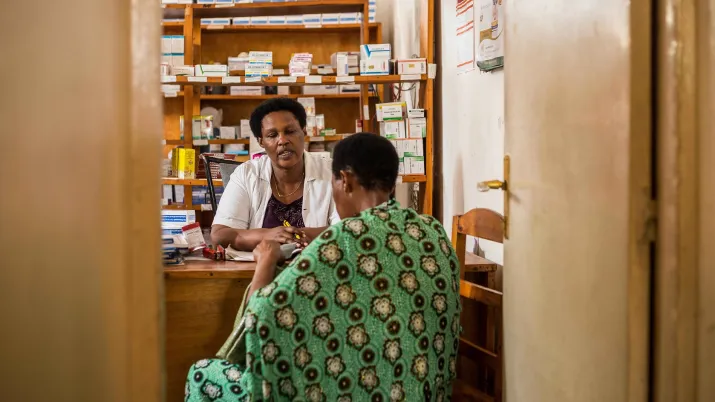
Conceptualizing and analyzing inequality and social cohesion in South Africa
Completed, under assessment
2016 - 2017
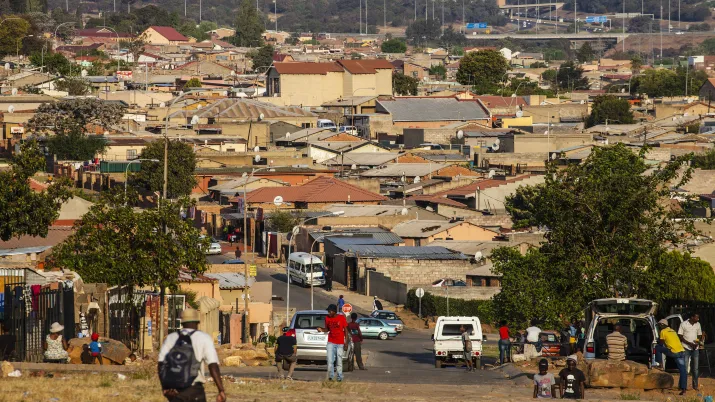
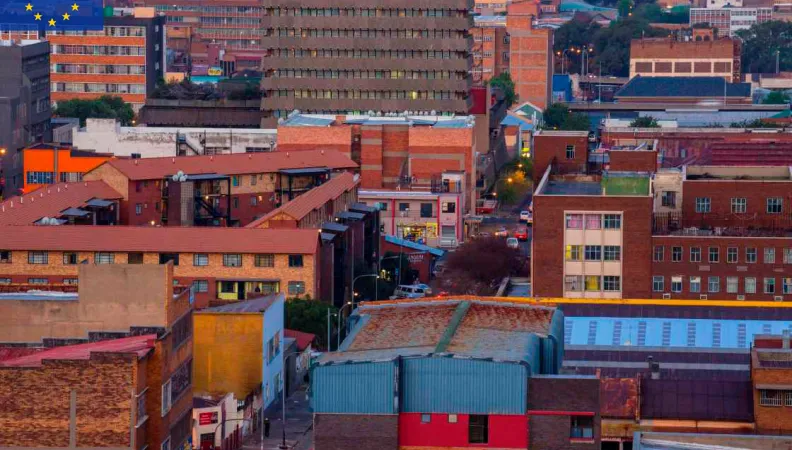 Legal notice EU (project) This study deals with the new forms of affordable housing and public housing in South African cities. The objective? To determine whether these projects help reduce economic inequalities and encourage social inclusion.
Legal notice EU (project) This study deals with the new forms of affordable housing and public housing in South African cities. The objective? To determine whether these projects help reduce economic inequalities and encourage social inclusion.
Context
Since the end of apartheid, the successive South African governments have put emphasis on a very proactive public-housing policy, notably by having built 2.7 million housing units for the disadvantaged classes. However, various sources estimate that another 2 million affordable housing units are still needed (which would concern 12 million people, or one-fourth of the population of South Africa). Furthermore, construction of the 2.7 million housing units has not eliminated slums, which continue to spread in the major South African cities. Finally, most of the public housing has been established in the outer peripheries of cities: this hinders access by the beneficiaries to the areas offering jobs and services and contributes to continued racial and social segregation.
The most recent trends have seen the private sector encouraged to participate in the construction or renovation of affordable housing.
This project is part of the first phase of the Research Facility on Inequalities, coordinated by AFD and funded by the European Commission's Directorate-General for International Partnerships over the 2017-2020 period. The first phase of the Facility has led to the conduct of 22 research projects and the publication of around 100 research papers and policy briefs.
Goal
The objective of this research project is to understand the impact of projects such as the “Integrated Housing Developments” or so-called “social” housing in the major South African cities (Johannesburg, Cape Town, and Durban). Other tools furthering social inclusion are also studied, such as the regulations and tax incentives that encourage production of affordable housing by the private sector, etc.
As part of this study, we cover both the question of reducing economic inequalities and the question of the scale at which inequalities should be examined: by neighborhood, by district, or citywide.
The study also defines the determinants and obstacles with regard to the production of public and affordable housing. These include the economic model, support from the public sector, private investment, regulatory framework, difficulties in implementation, and others.
Method
The research project makes a case study of several projects involving the production of subsidized housing in three major South African cities (Cape Town, Johannesburg, and Durban). Several socio-economic indicators are used to evaluate inequalities.Series of data on housing supply and demand have been gathered, from the 2000s to 2018. The study looks for the most disaggregated data possible, in order to identify tendencies within cities regarding segregation, inclusion, and exclusion.
The role of different sources of income is analyzed, in particular the incomes and expenditures related to housing, by cross-analyzing them with the Gini index on inequalities.
The study also has a qualitative component dealing with the forms of production and regulation of affordable housing in South Africa.
Results
You may find the research papers here:
- Social housing and upward mobility in South Africa
- The role of social housing in reducing inequality in South African cities
You may find the policy briefs here:
Contacts:
Irène Salenson, Research Officer, AFD
Ivan Turok, Executive Director in the Economic Performance and Development Unit of the Human Science Research Council
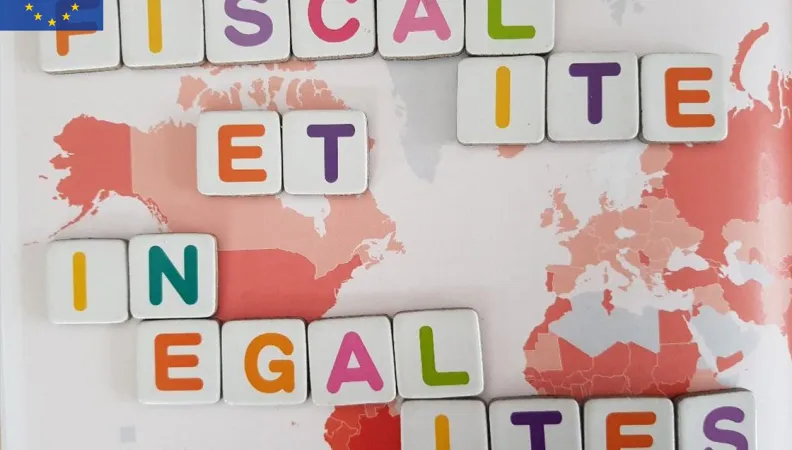 Legal notice EU (project) Via their tax component and their component of transfers and public expenditure, budget policies are a crucial instrument for governments in their fight against inequalities. This research project seeks to improve understanding of the relationship between income inequalities and these budget policies in developing countries.
Legal notice EU (project) Via their tax component and their component of transfers and public expenditure, budget policies are a crucial instrument for governments in their fight against inequalities. This research project seeks to improve understanding of the relationship between income inequalities and these budget policies in developing countries.
Context
Reduction of inequality is one of the core Sustainable Development Goals (SDGs). One of the targets of SDG 10 is for income growth of a country’s poorest 40% to be higher than the national average. Reaching this objective requires setting up economic policies on public expenditures and taxes that will benefit the poorest people. At the same time, mobilizing tax revenue can play a key role in financing the SDGs, but it is important to understand under what conditions this higher level of tax revenue collection is reconcilable with the goal of reducing inequalities.
This project is part of the first phase of the Research Facility on Inequalities, coordinated by AFD and funded by the European Commission's Directorate-General for International Partnerships over the 2017-2020 period. The first phase of the Facility has led to the conduct of 22 research projects and the publication of around 100 research papers and policy briefs.
Goal
This research project seeks to improve understanding of the relationship between income inequality and budget policies in developing countries. The study is divided into three parts:
- Investigation into the redistributive impact of taxes, transfers, and public expenditure in three countries of West Africa (Côte d’Ivoire, Mali, and Senegal). The analysis will try to answer the following questions:
- Who pays taxes, and who benefits from the transfers and public expenditures?
-
What is the overall impact of the tax and transfer systems on inequalities?
-
What tax instrument can mobilize revenues while reducing poverty and inequality?
- Study of the effect on inequalities from applying different types of taxes in the developing countries. Is the increase in tax revenues (measured by the ratio between revenue and GDP) linked to a reduction or an increase in inequalities? The relationship between the type of taxes levied and the change in inequalities within a country and between different countries will be studied in order to identify which taxes are progressive or regressive.
- Analysis of tax compliance behaviors in Africa, by identifying how the level of inequalities affects citizens’ attitude towards taxes.
Method
This research project will use econometric quantitative studies based on household survey data and macro-economic data available on a large number of countries (Parts 2 and 3). Microsimulation tools will also be used (Part 1).
Results
You may find the research papers and the policy briefs here :
Research papers:
- Fiscal consolidation and health inequality: Evidence from infant mortality in Sub-Saharan Africa
- Collect more, spend better? Assessing the incidence of fiscal systems and public spending in three francophone West African countries
- Inequality in the public good provision and attitude towards taxation: sub-national evidence from Africa
Policy briefs:
- Collect more, spend better? Enhancing fiscal redistribution in West Africa
- Fiscal consolidation in Sub-Saharan Africa: Unequal effects on children’s health
- Building fiscal capacity in Sub-Saharan Africa: The role of local inequality
- Measuring local inequality: Insights from data on night lights
Find also the presentation of the research paper "Inequality in the public good provision and attitude towards taxation: sub-national evidence from Africa" by Marin Ferry, Senior Lecturer at Gustave Eiffel University / Associate Researcher IRD-DIAL during the fourth webinar of the Research Facility on Inequalities:
Contact: Hélène Ehrhart, Economist, AFD
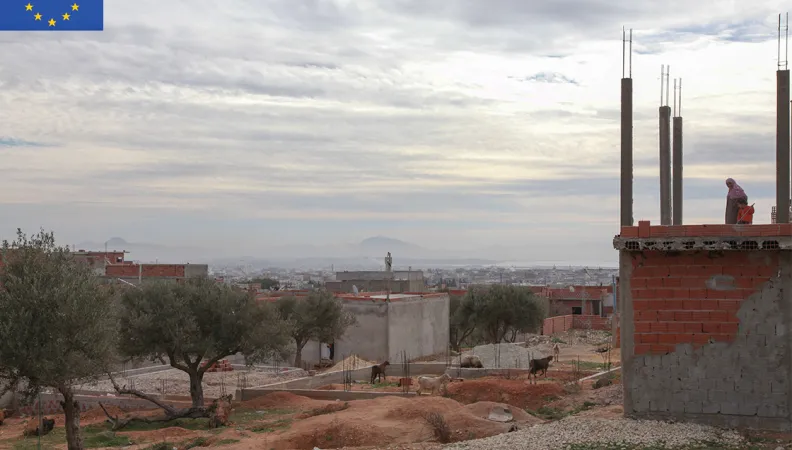 Legal notice EU (project) This research project examines inequalities in Tunisia, in order to provide a more in-depth description and analysis of them in their various forms. In particular, it explores the determinants of the spatial distribution of inequalities, so that new proposals can be formulated on the role of human capital (both acquired and inherited) and social capital. The objective? To propose decision-making tools for better designing policies to fight against inequalities.
Legal notice EU (project) This research project examines inequalities in Tunisia, in order to provide a more in-depth description and analysis of them in their various forms. In particular, it explores the determinants of the spatial distribution of inequalities, so that new proposals can be formulated on the role of human capital (both acquired and inherited) and social capital. The objective? To propose decision-making tools for better designing policies to fight against inequalities.
Context
Economic, social, and regional inequalities represent a major concern in Tunisia and around the world—for both ethical and political reasons. Growing gaps in equality threaten stability and social peace. They also discourage private initiative, curb investment, and reduce productivity.
This project is part of the first phase of the Research Facility on Inequalities, coordinated by AFD and funded by the European Commission's Directorate-General for International Partnerships over the 2017-2020 period. The first phase of the Facility has led to the conduct of 22 research projects and the publication of around 100 research papers and policy briefs.
Goal
This research project has two components.
- The first consists of an in-depth review of the state of inequalities in Tunisia, including the geographical dimension. It should help take stock of the knowledge about this issue in Tunisia, by highlighting the territorial aspects of the various dimensions of inequalities.
- The second component involves analysis of the determinants of inequalities. In a context of territorial comparison, the analysis focuses on social characteristics, training, and evolution of social capital. It also takes into account the importance of heritage in skills and knowledge, i.e. the inherited human capital that supplements the human capital acquired through the formal education system.
The two components of this research program are complementary and must be carried out in a parallel fashion. The objective? To give a broader perspective of the geographical aspects that characterize inequalities in Tunisia.
Two articles, available in the "Results" section below, have been produced from the research:
- The first one that takes stock of the inequalities;
- The second one on their determinants and on the role of human and social capital in the emergence (or formation) of inequalities.
Method
- A review of national and international literature will be conducted, especially on the conceptual and theoretical aspects. This will make it possible to fine-tune the analytical framework for measurement and analysis of inequalities and their determinants.
- A quantitative analysis on the state and evolution of inequalities will be carried out, based on available data.
- A survey will be carried out, with the main objective of gathering data on human capital and on social capital, through the diverse geographical areas of Tunisia where quite homogeneous communities are identified. This survey will make it possible to propose a measurement of human and social capital, which will be used to analyze the determinants of inequalities.
Results
You may find the research papers and the policy brief below.
Research papers:
- Les inégalités en Tunisie (in French)
- Les inégalités en Tunisie : quels rôles pour le capital humain hérité et le capital social ? (in French)
Policy brief:
Contact:
- Cecilia Poggi, Research Officer, AFD

